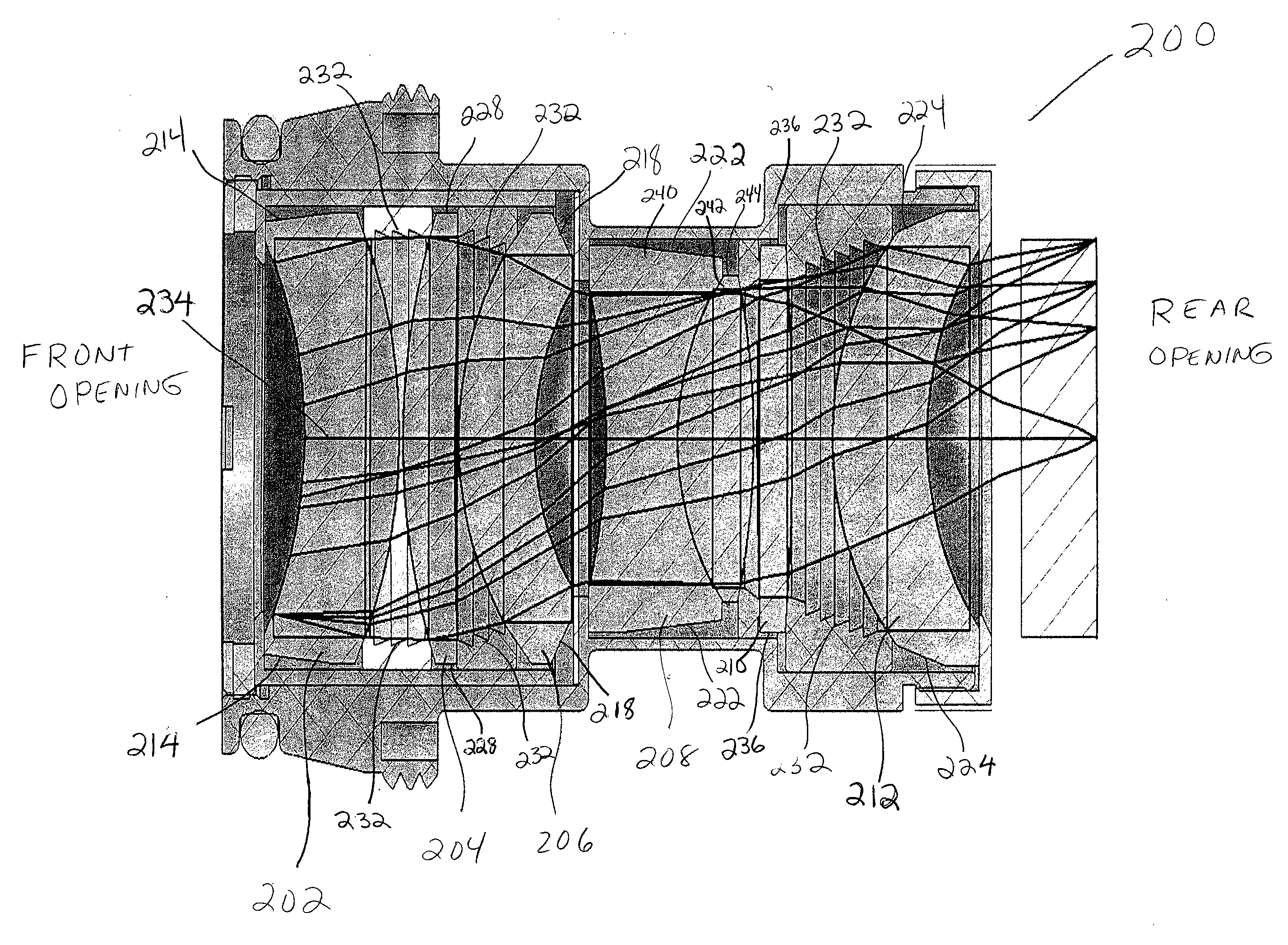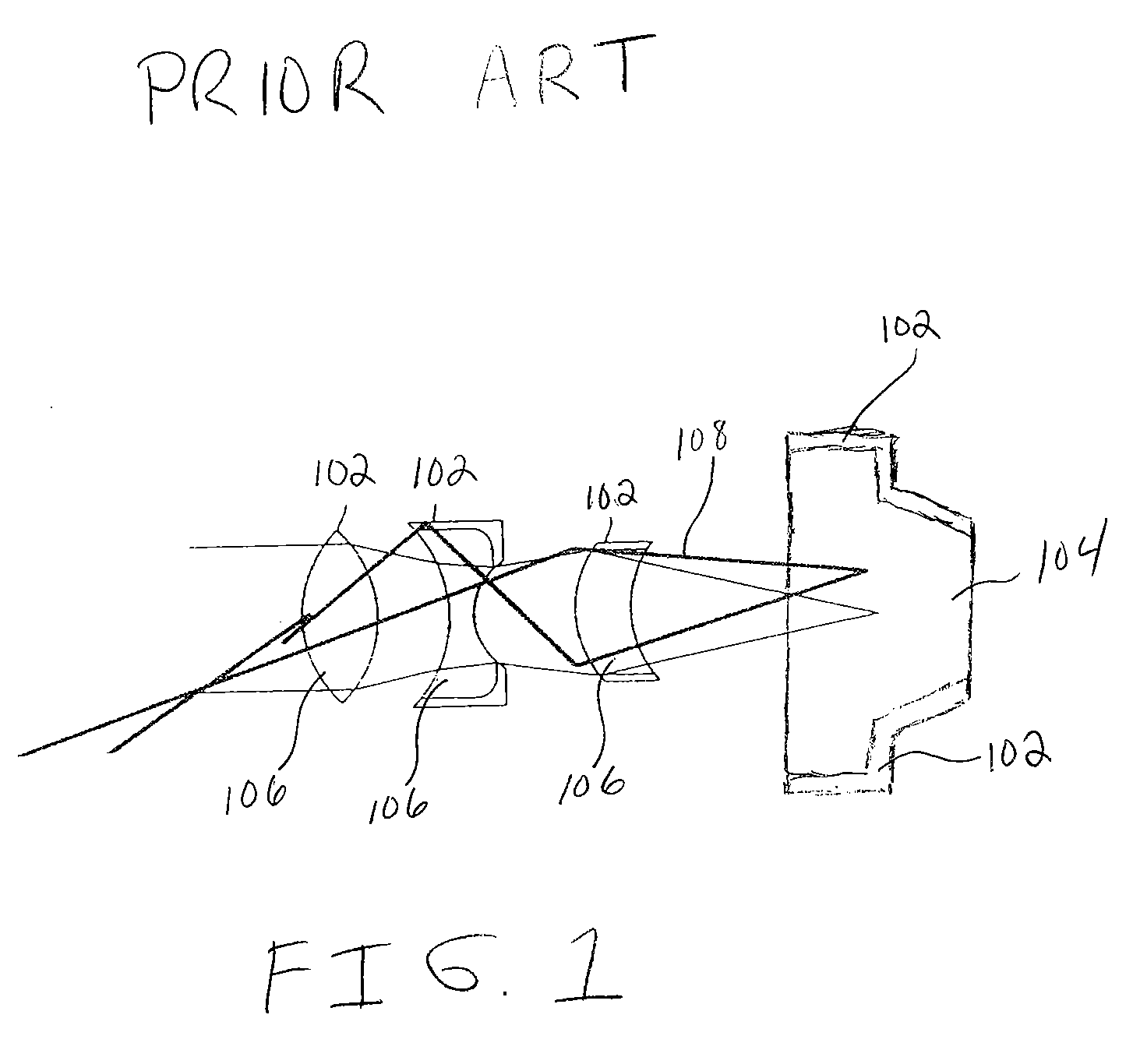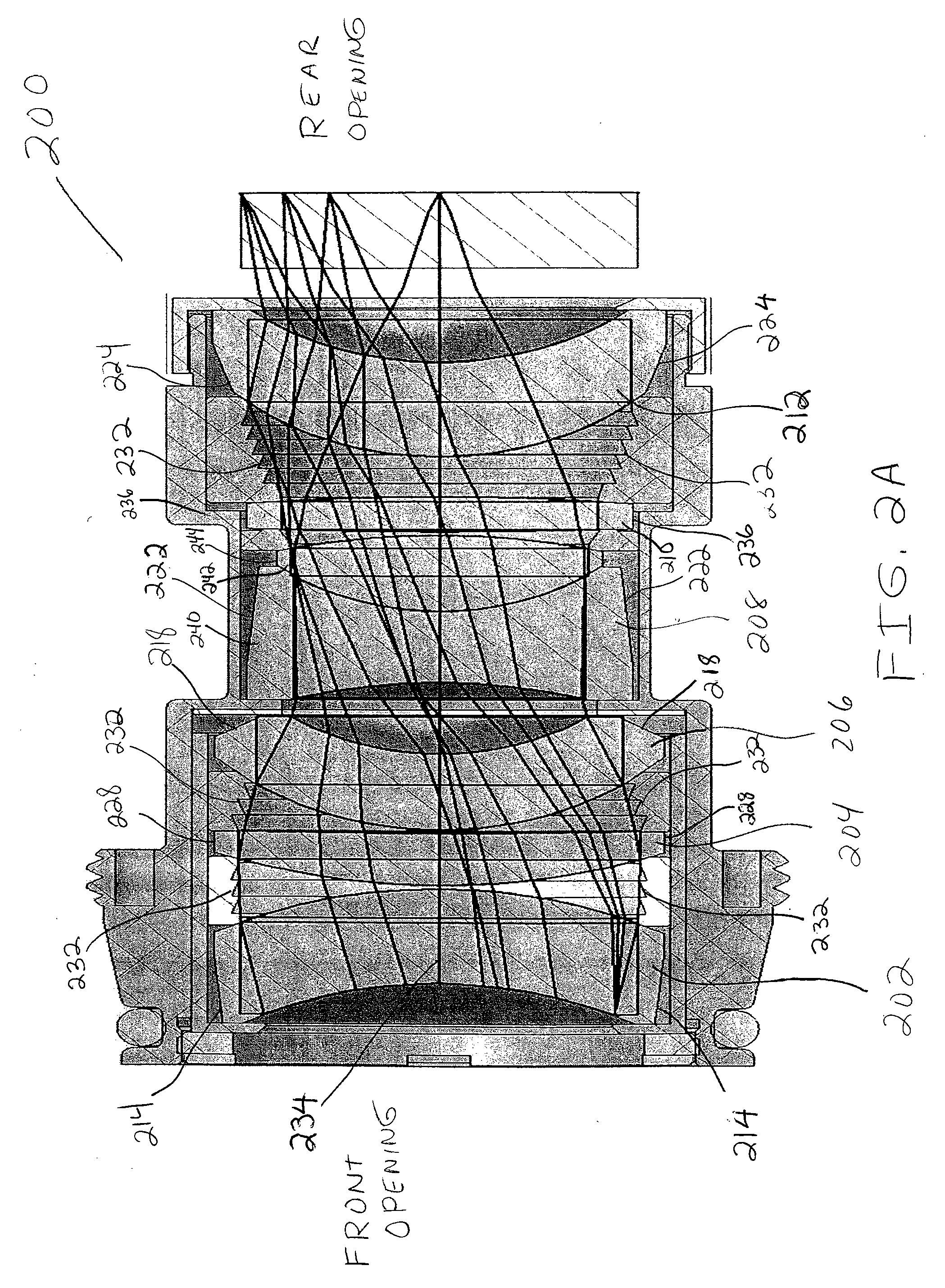Low stray light veiling glare objective lens for night vision systems
a technology of objective lens and stray light, which is applied in the field of low stray light veiling glare objective lens for night vision systems, can solve the problems of manifested veiling glare, and achieve the effects of reducing glare, reducing glare to the viewer, and less veiling glar
- Summary
- Abstract
- Description
- Claims
- Application Information
AI Technical Summary
Benefits of technology
Problems solved by technology
Method used
Image
Examples
Embodiment Construction
[0019]The “blackened” edges described in conventional systems are partially absorbent and scatter any unabsorbed light into the field of view of the lens system causing veiling glare. FIG. 1 shows different prior art lenses 106 including face plate 104 having blackened edges 102. While edges 102 are blackened with an absorbing ink, light energy may not be effectively absorbed by the ink. As shown in FIG. 1, light energy 108 reflects off from blackened edges 102, causing veiling glare.
[0020]Hydrogen firing of lenses for veiling glare reduction may absorb additional light energy. Unfortunately, the types of glass which may be selected for hydrogen firing are limited. Furthermore, the edges of lenses that are hydrogen fired to form blackened surfaces having the same index of refraction require additional processing and edge grinding.
[0021]Although hydrogen fired blackened edges may absorb large amounts of light in the blue, green and red spectral regions, these edges are transmissive i...
PUM
 Login to View More
Login to View More Abstract
Description
Claims
Application Information
 Login to View More
Login to View More - R&D
- Intellectual Property
- Life Sciences
- Materials
- Tech Scout
- Unparalleled Data Quality
- Higher Quality Content
- 60% Fewer Hallucinations
Browse by: Latest US Patents, China's latest patents, Technical Efficacy Thesaurus, Application Domain, Technology Topic, Popular Technical Reports.
© 2025 PatSnap. All rights reserved.Legal|Privacy policy|Modern Slavery Act Transparency Statement|Sitemap|About US| Contact US: help@patsnap.com



